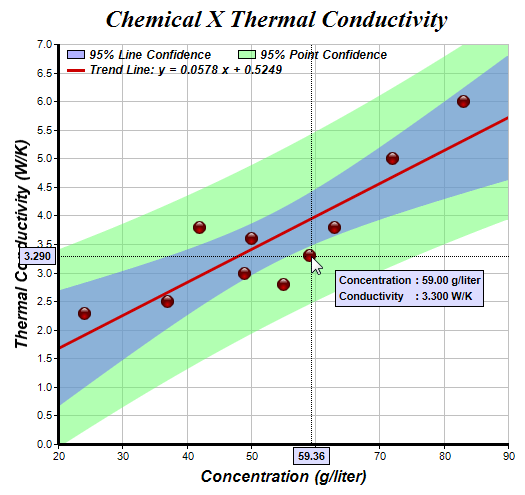#!/usr/bin/perl
# In the sample code, the ChartDirector for Perl module is assumed to be in "../lib"
use File::Basename;
use lib (dirname($0)."/../lib") =~ /(.*)/;
use perlchartdir;
# Get HTTP query parameters
use CGI;
my $query = new CGI;
#
# In this demo, the generated web page needs to load the "cdjcv.js" Javascript file and several GIF
# files. For ease of installation, we put these files in the same directory as this script. However,
# if this script is installed in a CGI only directory (such as cgi-bin), the web server would not
# allow the browser to access these non-CGI files.
#
# To get around this potential issue, a special load resource script is used to load these files.
# Instead of using:
#
# <SCRIPT SRC="cdjcv.js">
#
# we now use:
#
# <SCRIPT SRC="loadresource.pl?file=cdjcv.js">
#
# Similar methods are used to load the GIF files.
#
# If this script is not in a CGI only directory, you may replace the following loadResource string
# with an empty string "" to improve performance.
#
my $loadResource = "loadresource.pl?file=";
# The XY data of the first data series
my $dataX = [50, 55, 37, 24, 42, 49, 63, 72, 83, 59];
my $dataY = [3.6, 2.8, 2.5, 2.3, 3.8, 3.0, 3.8, 5.0, 6.0, 3.3];
# Create a XYChart object of size 520 x 490 pixels
my $c = new XYChart(520, 490);
# Set the plotarea at (60, 40) and of size 450 x 400 pixels, with white background and a light grey
# border (0xc0c0c0). Turn on both horizontal and vertical grid lines with light grey color
# (0xc0c0c0)
$c->setPlotArea(60, 40, 450, 400, 0xffffff, -1, 0xc0c0c0, 0xc0c0c0, -1);
# Add a title to the chart using 18 point Times Bold Itatic font.
$c->addTitle(" Chemical X Thermal Conductivity", "timesbi.ttf", 18);
# Add titles to the axes using 12pt Arial Bold Italic font
$c->yAxis()->setTitle("Thermal Conductivity (W/K)", "arialbi.ttf", 12);
$c->xAxis()->setTitle("Concentration (g/liter)", "arialbi.ttf", 12);
# Set the axes line width to 3 pixels
$c->yAxis()->setWidth(3);
$c->xAxis()->setWidth(3);
# Add a scatter layer using (dataX, dataY)
my $scatterLayer = $c->addScatterLayer($dataX, $dataY, "", $perlchartdir::GlassSphereShape, 13,
0xcc0000);
# Show custom Javascript tooltip for the scatter layer
$scatterLayer->setHTMLImageMap("", "",
"onmouseover='showDataPointToolTip({x}, {value})' onmouseout='hideToolTip()'");
# Add a trend line layer for (dataX, dataY)
my $trendLayer = $c->addTrendLayer2($dataX, $dataY, 0xcc0000);
# Set the line width to 3 pixels
$trendLayer->setLineWidth(3);
# Add a 95% confidence band for the line
$trendLayer->addConfidenceBand(0.95, 0x806666ff);
# Add a 95% confidence band (prediction band) for the points
$trendLayer->addPredictionBand(0.95, 0x8066ff66);
# Show custom Javascript tooltip for the trend layer
$trendLayer->setHTMLImageMap("", "",
"onmouseover='showTrendLineToolTip({slope}, {intercept})' onmouseout='hideToolTip()'");
# Add a legend box at (60, 35) (top of the chart) with horizontal layout. Use 10pt Arial Bold Italic
# font. Set the background and border color to Transparent and use line style legend icons.
my $legendBox = $c->addLegend(60, 35, 0, "arialbi.ttf", 9);
$legendBox->setBackground($perlchartdir::Transparent);
$legendBox->setLineStyleKey(1);
# Add entries to the legend box
$legendBox->addKey("95% Line Confidence", 0x806666ff);
$legendBox->addKey("95% Point Confidence", 0x8066ff66);
$legendBox->addKey(sprintf("Trend Line: y = %.4f x + %.4f", $trendLayer->getSlope(),
$trendLayer->getIntercept()), 0xcc0000, 3);
# Create the WebChartViewer object
my $viewer = new WebChartViewer($query, "chart1");
# Output the chart
my $chartQuery = $c->makeTmpFile("/tmp/tmpcharts");
# Include tool tip for the chart
my $imageMap = $c->getHTMLImageMap("");
# Set the chart URL and image map to the viewer
$viewer->setImageUrl("getchart.pl?img=/tmp/tmpcharts/".$chartQuery);
$viewer->setImageMap($imageMap);
# Output Javascript chart model to the browser to support tracking cursor
$viewer->setChartModel($c->getJsChartModel());
print "Content-type: text/html\n\n";
print <<EndOfHTML
<!DOCTYPE html>
<html>
<head>
<title>Crosshair with Axis Labels</title>
<script type="text/javascript" src="${loadResource}cdjcv.js"></script>
</head>
<body style="margin:5px 0px 0px 5px">
<script type="text/javascript">
//
// Use the window load event to set up the MouseMovePlotArea event handler
//
JsChartViewer.addEventListener(window, 'load', function() {
var viewer = JsChartViewer.get('@{[$viewer->getId()]}');
// Draw track cursor when mouse is moving over plotarea. Hide it when mouse leaves plot area.
viewer.attachHandler(["MouseMovePlotArea", "TouchStartPlotArea", "TouchMovePlotArea", "ChartMove"],
function(e) {
this.preventDefault(e); // Prevent the browser from using touch events for other actions
crossHairAxisLabel(viewer, viewer.getPlotAreaMouseX(), viewer.getPlotAreaMouseY());
viewer.setAutoHide("all", ["MouseOutPlotArea", "TouchEndPlotArea"]);
});
});
//
// Draw cross hair cursor with axis labels
//
function crossHairAxisLabel(viewer, x, y)
{
// Show cross hair
viewer.showCrossHair(x, y);
// The chart, its plot area and axes
var c = viewer.getChart();
var xAxis = c.xAxis();
var yAxis = c.yAxis();
// The axis label style
var labelStyle = "padding:2px 4px; font: bold 8pt arial; border:1px solid black;" +
"background-color:#DDDDFF; -webkit-text-size-adjust:100%;";
// Draw x-axis label
var yPos = xAxis.getY() + ((xAxis.getAlignment() == JsChartViewer.Top) ? -2 : 3);
var alignment = (xAxis.getAlignment() == JsChartViewer.Top) ? JsChartViewer.Bottom : JsChartViewer.Top;
viewer.showTextBox("xAxisLabel", x, yPos, alignment, c.getXValue(x).toPrecision(4), labelStyle);
// Draw y-axis label
var xPos = yAxis.getX() + ((yAxis.getAlignment() == JsChartViewer.Left) ? -2 : 3);
var alignment = (yAxis.getAlignment() == JsChartViewer.Left) ? JsChartViewer.Right : JsChartViewer.Left;
viewer.showTextBox("yAxisLabel", xPos, y, alignment, c.getYValue(y, yAxis).toPrecision(4), labelStyle);
}
//
// Show custom tooltip for data points
//
function showDataPointToolTip(x, y)
{
var viewer = JsChartViewer.get('@{[$viewer->getId()]}');
viewer.showTextBox("toolTipBox", viewer.getChartMouseX() + 20, viewer.getChartMouseY() + 20, JsChartViewer.TopLeft,
"<table><tr><td>Concentration</td><td>: " + x.toPrecision(4) +
" g/liter</td></tr><tr><td>Conductivity</td><td>: " + y.toPrecision(4) + " W/K</td></tr></table>",
"padding:0px; font:bold 8pt arial; border:1px solid black; background-color:#DDDDFF");
}
//
// Show custom tooltip for the trend line
//
function showTrendLineToolTip(slope, intercept)
{
var viewer = JsChartViewer.get('@{[$viewer->getId()]}');
viewer.showTextBox("toolTipBox", viewer.getChartMouseX() + 20, viewer.getChartMouseY() + 20, JsChartViewer.TopLeft,
"Trend Line: y = " + slope.toFixed(4) + " x + " + intercept.toFixed(4),
"padding:2px 4px; font:bold 8pt arial; border:1px solid black; background-color:#DDDDFF");
}
//
// Hide custom tooltip
//
function hideToolTip()
{
var viewer = JsChartViewer.get('@{[$viewer->getId()]}');
viewer.hideObj("toolTipBox");
}
</script>
<div style="font-size:18pt; font-family:verdana; font-weight:bold">
Crosshair with Axis Labels
</div>
<hr style="border:solid 1px #000080" />
<div style="font-size:10pt; font-family:verdana; margin-bottom:1.5em">
<a href="viewsource.pl?file=$ENV{"SCRIPT_NAME"}">View Source Code</a>
</div>
<!-- ****** Here is the chart image ****** -->
@{[$viewer->renderHTML()]}
</body>
</html>
EndOfHTML
; |
